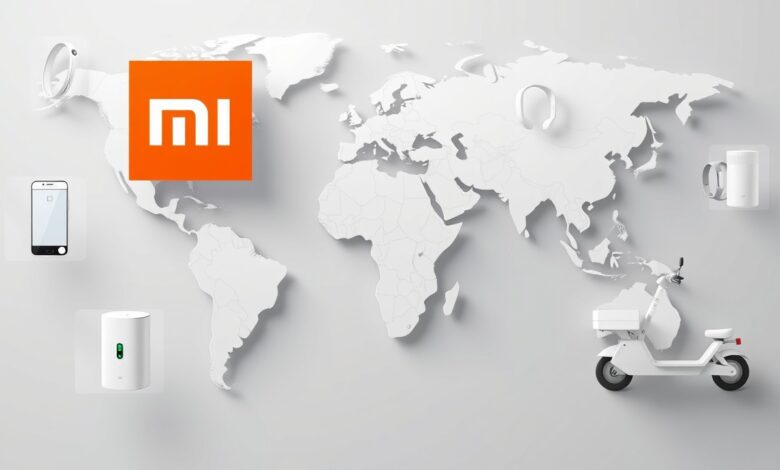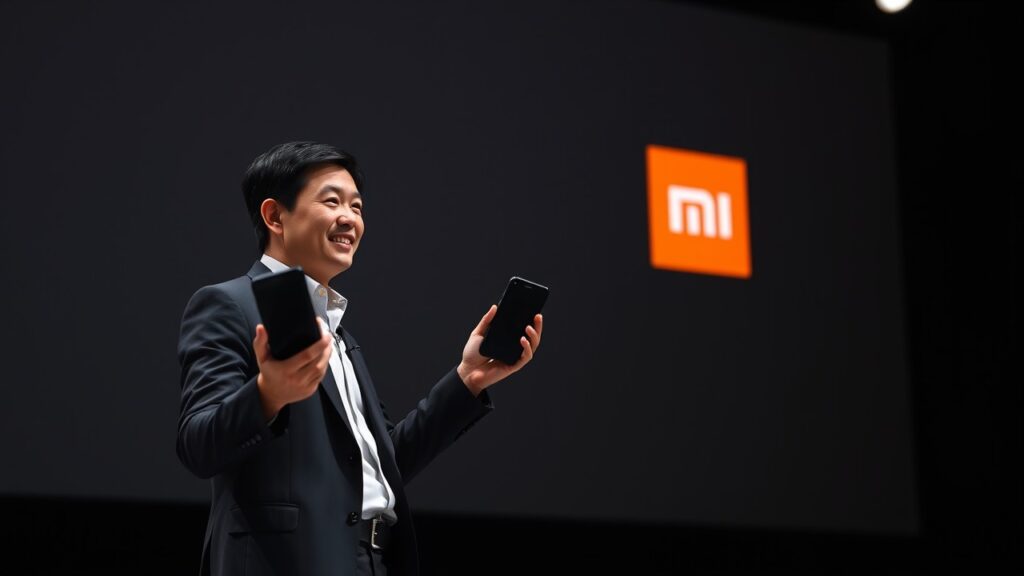Discover Xiaomi History: The Making of the ‘Chinese Apple’ by Lei Jun

Xiaomi History: Early History and Vision
Xiaomi, often dubbed the “Chinese Apple,” represents more than just another tech company from China. Founded in 2010 by Lei Jun, the company has transformed from a startup to a global electronics giant with innovative products that rival the biggest names in technology. What makes Xiaomi unique is not only its impressive product range but also its business model, which has disrupted traditional manufacturing and distribution in ways few expected.
The Founding of Xiaomi and Lei Jun’s Inspiration
The story of Xiaomi begins with Lei Jun, a visionary inspired by the success of Apple and Steve Jobs’ approach to product design and branding. Lei Jun, who graduated from Wuhan University, built a career in the tech industry by founding Joyo, an e-commerce site that Amazon later acquired. His experiences in tech shaped his ambition to build a brand that combined high-quality products with affordability—a radical departure from the premium pricing strategy that had dominated the tech industry.
Initially, Lei Jun’s goal was to create software that would improve the Android user experience. Xiaomi’s first product was MIUI, a custom Android firmware that offered a cleaner, more efficient, and user-friendly experience. This initial success with software motivated Lei Jun to expand into hardware, and by 2011, Xiaomi had launched its first smartphone, the Xiaomi Mi 1.

Key Innovations in Xiaomi’s Journey
Xiaomi’s innovation strategy combines affordability with high functionality. Here are some of its key innovations:
- MIUI Operating System: Xiaomi’s MIUI operating system is a customized Android firmware that quickly attracted a dedicated user base. MIUI was unique because it incorporated feedback directly from users, who could suggest and vote on new features.
- Crowdsourced Feedback and Beta Testing: Xiaomi made user feedback central to its product development. Instead of focusing solely on market research, Xiaomi invited users to actively shape its products, making them feel like a part of the company’s growth. This feedback-driven approach is rare among global tech giants and has helped Xiaomi build a loyal following.
- Flash Sales and Lean Inventory Model: Xiaomi’s flash sales, which began as a necessity to control inventory, quickly became a sensation. By creating a sense of exclusivity and scarcity, Xiaomi maximized demand and kept production costs low. This model allowed Xiaomi to offer high-quality smartphones at competitive prices, capturing massive market shares in Asia and beyond.
- Xiaomi’s Ecosystem Approach: Xiaomi’s ecosystem strategy links its smartphones with a variety of connected devices, including fitness bands, smart speakers, and even electric scooters. The company invested in a vast network of startups to create a “smart home” ecosystem that interlinks Xiaomi devices seamlessly.
Global Expansion and Impact of Xiaomi’s Business Model
Xiaomi’s expansion beyond China was rapid and strategic. After securing its position domestically, the company began exploring emerging markets like India, where consumers desired affordable, high-quality smartphones. Xiaomi’s model of high-value, affordable technology found enthusiastic acceptance, helping it outpace competitors in several countries.
- India: Xiaomi entered India in 2014, partnering with Flipkart for online sales. Within a few years, it became India’s top smartphone brand, dominating the market with its budget-friendly yet high-performance devices. Its focus on local manufacturing in India, under the “Make in India” initiative, strengthened its presence.
- Europe and Latin America: Xiaomi’s expansion into Europe and Latin America shows its ability to adapt to different markets. The company introduced models that met regional needs and partnered with local distributors. In Europe, Xiaomi’s competitive pricing allowed it to challenge established brands like Samsung and Apple.
- Online-Only Strategy and Digital Marketing: Xiaomi’s online-only strategy initially gave it a cost advantage over competitors that relied on physical stores. The company leveraged social media platforms to build brand loyalty, interact with users, and promote flash sales. Xiaomi’s social media strategy, especially on platforms like Twitter and Weibo, has made it a leader in digital marketing.
Read also: iOS Accessibility Features You Should Know
Xiaomi’s Role as the ‘Chinese Apple’
Xiaomi’s journey to being recognized as the “Chinese Apple” isn’t coincidental. Lei Jun openly admired Steve Jobs and often drew inspiration from Apple’s design principles and brand philosophy. Here’s how Xiaomi has emulated, yet differentiated itself from, Apple:
- Product Design: Xiaomi’s design philosophy emphasizes simplicity and elegance, drawing clear parallels to Apple. Xiaomi’s smartphones and devices feature clean lines and minimalistic interfaces, setting them apart from the overly complex designs common in other Android products.
- Brand Perception and User Experience: By focusing on providing a seamless user experience, Xiaomi has managed to capture consumer loyalty in much the same way Apple has. Its ecosystem, similar to Apple’s, encourages users to stay within the Xiaomi brand, as products work better together.
- Affordability vs. Exclusivity: Unlike Apple, which markets itself as a premium brand, Xiaomi has maintained its brand accessibility by keeping prices lower and offering premium-like features. This has broadened its appeal, especially in emerging markets where high-end Apple products remain unaffordable.

Xiaomi’s Ecosystem and Product Range
Xiaomi’s ecosystem extends beyond smartphones. By investing in more than 200 startups that produce everything from smart home devices to electric scooters, Xiaomi has created a product ecosystem that rivals the scope of companies like Apple and Samsung.
- Smart Home Devices: Xiaomi’s smart home lineup includes air purifiers, robot vacuums, and security cameras. These products connect through the Mi Home app, allowing users to control their entire home environment with a Xiaomi device.
- Wearable Technology: Xiaomi’s Mi Band series offers affordable yet feature-rich fitness tracking. The Mi Band’s affordability and functionality have made it one of the best-selling wearables globally, especially in markets where more expensive options are less accessible.
- Electric Vehicles and Personal Mobility Devices: Xiaomi’s ecosystem approach also includes electric scooters, a popular choice for urban transportation. This diversification is part of Lei Jun’s vision to make Xiaomi a complete lifestyle brand, not limited to phones.
- Gaming and Audio Products: Xiaomi’s venture into gaming laptops and high-quality audio products like earphones and speakers shows its commitment to providing users with diverse options within its brand.
The Influence of Lei Jun and Xiaomi’s Future Vision
Lei Jun remains the driving force behind Xiaomi’s innovation and global expansion. Known for his hands-on leadership style, Lei Jun actively participates in product development, shaping Xiaomi’s future to ensure it remains competitive in a rapidly evolving market.
- Investment in AI and IoT: Xiaomi’s investment in artificial intelligence and the Internet of Things (IoT) reflects its goal to be a leader in the smart home and connected device markets. Lei Jun envisions Xiaomi’s devices as an interconnected ecosystem that makes everyday life more convenient for users.
- Sustainability and Energy Efficiency: In recent years, Xiaomi has also focused on making its products more environmentally friendly. Its commitment to sustainability is evident in its manufacturing processes and in its push for energy-efficient devices.
- Global Competitiveness: With increasing competition in both the smartphone market and the smart home industry, Xiaomi is focused on solidifying its presence in the U.S. and Europe. Lei Jun’s strategic leadership will be crucial as Xiaomi seeks to expand into these mature, highly competitive markets.
Xiaomi’s Continued Evolution
Xiaomi’s history is a testament to innovation, consumer-centric strategies, and the visionary leadership of Lei Jun. From humble beginnings as a software company to its status as a global tech leader, Xiaomi’s story exemplifies how a company can redefine an industry. As Xiaomi continues to expand its ecosystem and invest in future technologies, its journey offers valuable insights into the potential of accessible, high-quality technology for a global audience.



